Cromford - The Cromford Canal
Part 02 - High Peak Junction to Cromford Wharf
w/e 17 May 2009
All this week's pictures were taken
with a Kodak DX6490
As we walked by the side of the Cromford Canal from
Leawood Pumphouse
to High Peak Junction we were following the former route
of the Cromford and High Peak Railway but now having crossed
the canal at High Peak Junction we continued the remainder of
the walk to Cromford Wharf along the canal towpath.
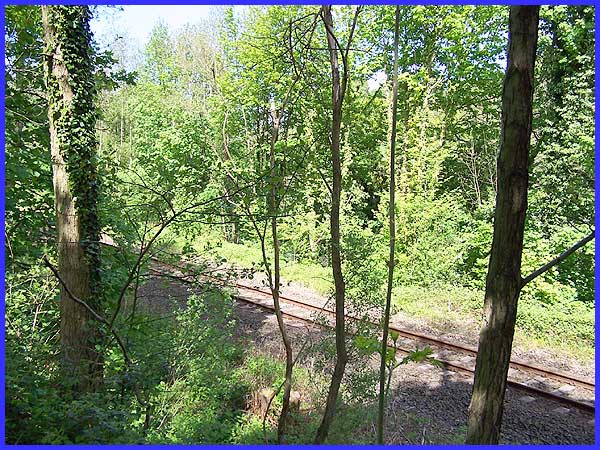
That was not the end of the railway though for now we could see
the tracks of the Derwent Valley Line which runs between Derby
and Matlock and along this stretch we were also treated to tantalising
glimpses between the trees of the River Derwent on the other
side of the tracks. We even caught a fleeting glimpse of the
minor road beyond the river between Cromford and Lea - three
parallel "r"s running down the valley, rail, river
and road.
|
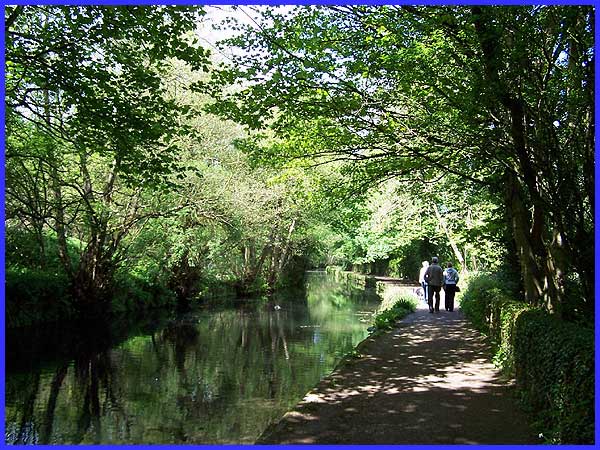
It is only about a mile between High Peak Junction and the end
of our walk at Cromford Wharf and much of it is through scenery
such as this. With trees overhanging the canal from both sides
it is almost tunnel-like in part but is still very popular with
walkers and not only on pleasant days like this when the sun
shines through the leafy canopy.
|
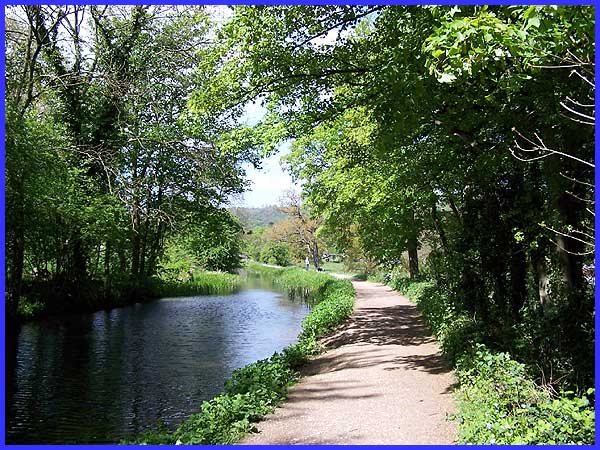
Nearing the northern end of the canal the trees become fewer
with the promise of more extensive views. The section of the
canal between Cromford and Ambergate was acquired by Derbyshire
County Council in 1974 and much restoration work has been done
by the Cromford Canal Society and the Friends of Cromford Canal.
|
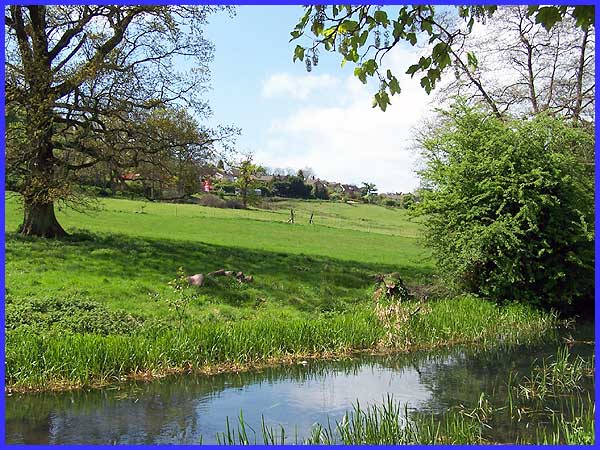
Cromford of course is known as the cradle of the industrial revolution
and owes this description due mainly to the influence of Sir
Richard Arkwright who built the world's first successful water
powered cotton spinning mill in the village in 1771. The canal
followed and was an important transportation aid opening in 1793,
a year after Arkwright's death. Ultimately with the onset of
rail and road links, the canal lost its importance. Today heavy
lorries can be seen travelling along the A6 higher up the hillside
on the left.
|
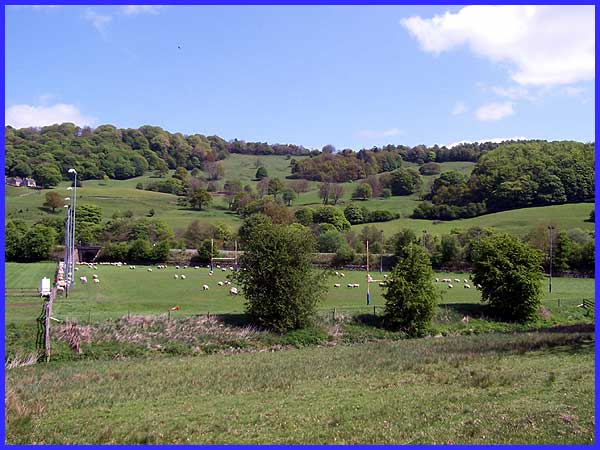
To the right meanwhile the valley floor levels out and in the
Cromford Meadows are cricket and rugby pitches. This is where
Matlock Rugby Club play their home games and it seems they have
recruited the local sheep to act as environmentally friendly
lawn mowers to keep this pitch in good order. I trust they check
for and remove any organic fertiliser prior to kick off though.
|
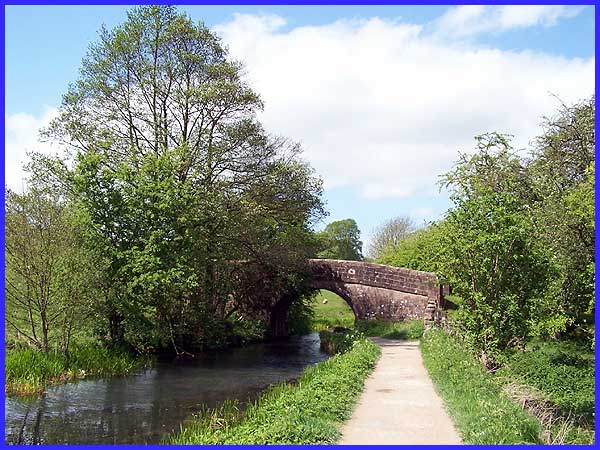
The Cromford to Ambergate section of the canal was built in the
1790s by William Jessop and was finally abandoned in 1944. An
old stone bridge crosses the canal and presumably this provided
an original access route to the meadows from the road high up
on the left.
|
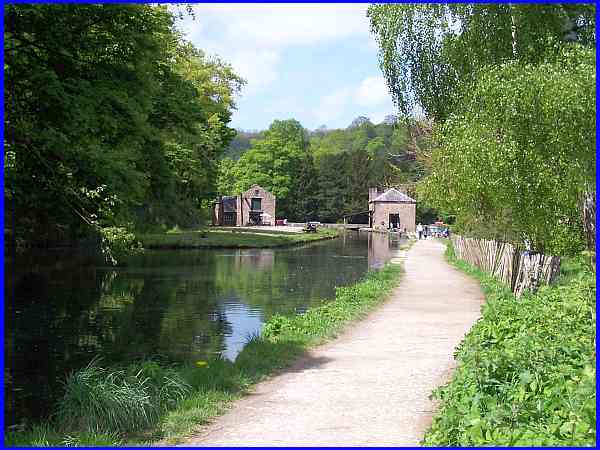
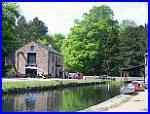 Soon after passing under the stone
bridge the end of the canal at Cromford Wharf comes into view.
The building on the left dates from about 1794 and was originally
a warehouse. A crane is still in situ at the end of the building.
On the right is a similar warehouse, this one dating from about
1824. As well as the raw materials used in Arkwright's cotton
trade, passengers were also carried from here on faster boats.
A weigh bridge at the far side of the building and a canopy over
the canal still exist but today the buildings are in use but
tourism and adventure activities are their main functions. Soon after passing under the stone
bridge the end of the canal at Cromford Wharf comes into view.
The building on the left dates from about 1794 and was originally
a warehouse. A crane is still in situ at the end of the building.
On the right is a similar warehouse, this one dating from about
1824. As well as the raw materials used in Arkwright's cotton
trade, passengers were also carried from here on faster boats.
A weigh bridge at the far side of the building and a canopy over
the canal still exist but today the buildings are in use but
tourism and adventure activities are their main functions.
|
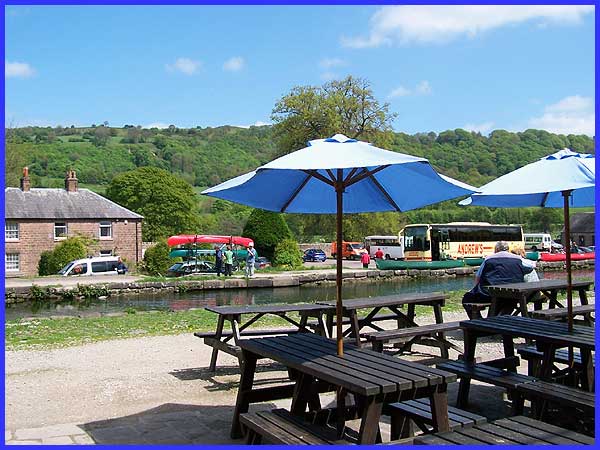
Note the canoes at the side of the canal which are used for just
one of the activities enabling dads and lads to have fun together
(and mums and daughters too no doubt). Refreshments are now served
from the older of the two buildings and as we enjoyed a cup of
hot chocolate, we thought that there's no better place to sit
to watch the ducks on the canal; to see another coach load of
excited children arrive; to peruse the two cottages opposite
built in 1796; to dream of the stables for canal horses and the
smithy that once stood where the vehicles now park or just to
enjoy the Derbyshire countryside.
Back to Part 01
|

